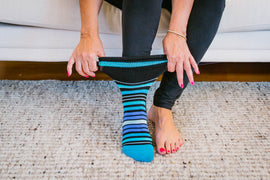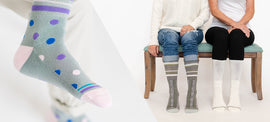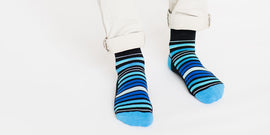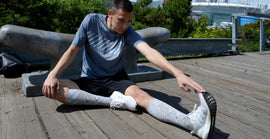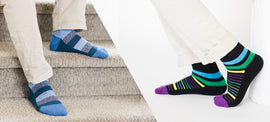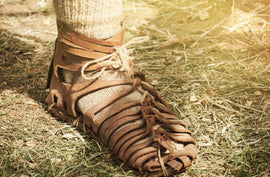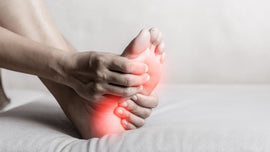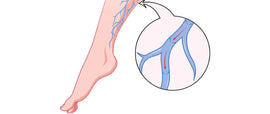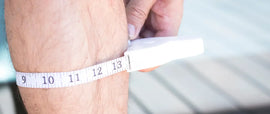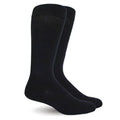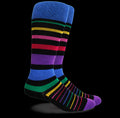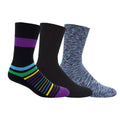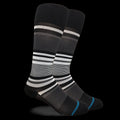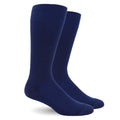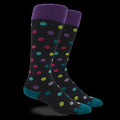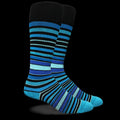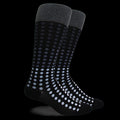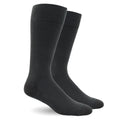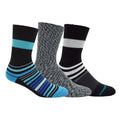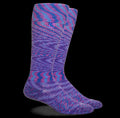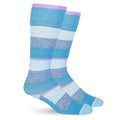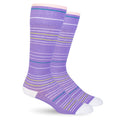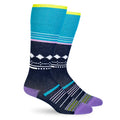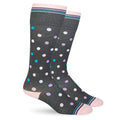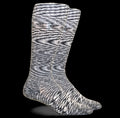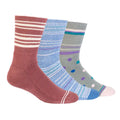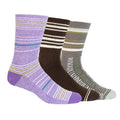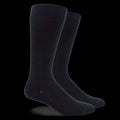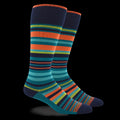Are You Wearing The Best Compression Socks For Recovery?
Posted by SIMON LIM

Compression socks have been around for a long time and have been increasingly popular among athletes. Compression socks for recovery are just the solution for an athlete who would want an improved performance or get a speedy recovery after a workout or activity.
Initially, the compression socks were designed for patients who had surgery, people who are prone to swelling (edema), and individuals who have diabetes, circulatory problems, phlebitis, varicose veins, and deep vein thrombosis (DVT).
The primary goal of compression garments is to help improve blood flow. For these people, compression socks help blood move back to the heart, so it doesn't pool in the lower parts of their bodies and cause swelling, cutting the risk of blood clots.
Aiming to get the same benefits of an improved blood flow, athletes started wearing compression socks. At first, some runners started wearing tight stockings after workouts and long-endurance runs when they didn't want to hurt their legs.
While wearing compression socks for running recovery, studies revealed faster recovery times, better running performance, and minor soreness. Later, research showed more promising benefits of compression socks for athletes.
Compression Socks for Athletes
Compressing garments that can help athletes recover has become more common in various sports. Many studies showed that compression garments could help athletes recover faster because they have good biochemical and physiological effects.
Athletic Recovery
Functional recovery can be thought of as sport-specific. Instead of looking at static or dynamic muscle strength changes, functional recovery is measured by how long it takes an athlete to complete a specific exercise for their sport.
What Happens to the Muscles During an Athletic Activity?

After tiring athletic activity, athletes significantly experience a delayed onset of muscle soreness.
Delayed onset muscle soreness (DOMS) is muscle pain that occurs after a workout that is usually seen 1–5 days after a workout.
During an exercise, you won't feel DOMS. Different kinds of muscle soreness can be felt during and shortly following an activity called acute muscular pain.
Microscopically minor muscle injury is the primary reason why an athlete is experiencing DOMS.
DOMS occurs after an exhaustive exercise or activity, causing creatinine kinase (CK), interleukin 6 (IL-6), and lactate to rise. These waste products are markers of muscle injury.
The markers are scientifically proven to be interconnected and often reveal how much muscle damage has occurred.
Marathon running has also been shown to raise IL-6 levels by up to 100 times what they were before.
Just after an endurance exercise, there is a lot of venous pooling in the lower limbs. This causes a significant drop in venous return and an increase in the time to get rid of waste products, particularly CK and lactate.
These "waste" products, when not released immediately by the body, can damage and injure healthy muscle cells, causing an athlete to suffer from DOMS.
How Can Compression Socks For Recovery Help Your Performance?

Compression socks for recovery have been shown to help athletes who wear them after running or after a plyometric exercise experience less pain.
They have also been shown to lower the levels of CK and lactate in the blood when they are worn after a workout. This means that the body's musculature repairs itself more quickly when there isn't a lot of tissue damage.
Compression socks have a well-known effect of increasing lower-limb venous return and reducing venous pooling after exercise, linked to essential changes in lower-limb oxygenation.
Lower extremity compression garments have also been shown to help athletes recover from exercise by decreasing their recovery heart rate right afterward.
This makes the socks even significantly helpful in the recovery of the athletes.
Compression garments have also been shown to help lower-limb "muscle pump" action, allowing blood flow to the kidneys and removing waste products from the blood.
It is thought that compression garments do this by putting pressure on the outside of the body, which makes less space for muscle edema to happen.
Improvement in the markers of muscle damage is demonstrated as an effect of using compression socks. This is substantial evidence that compression garments help athletes recover more quickly.
If compression socks help people recover after exhaustive exercises, they could help people recover from both training and competition.
Here's Why Size Matters When It Comes To Compression Socks For Recovery

When you buy the best compression socks for recovery, you'll need to know how big your calf and ankle are, not how big your shoes are.
Most brands on the market fit the same, but with Dr. Segal's compression socks, we use the size that best fits your calf to get the right compression level.
Dr. Segal's compression socks with graduated compression levels protect the plantar fascia, support the achilles, enhance circulation, and minimize swelling.
These socks are pleasant and easy to wear every day and can assist in speedy muscle recovery.
Key Takeaway
It's thought that athletes who wear compression socks for long, challenging endurance events may be able to do a little better at their jobs.
More than likely, compression garments may be another way to help your body recover in the first 24 hours after a hard workout or competition.
Test the socks yourself to find out whether or not they'll work.
SHARE:




